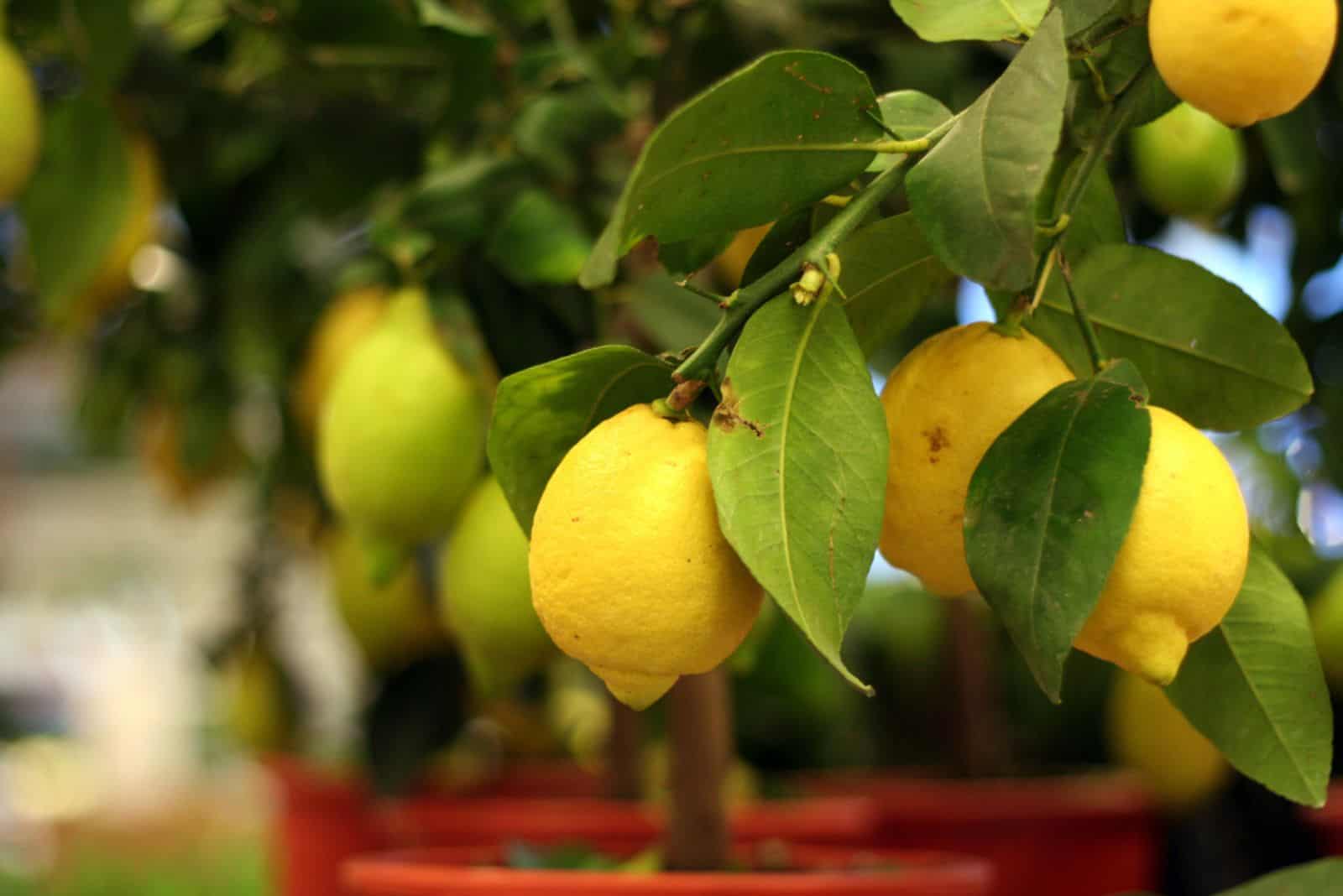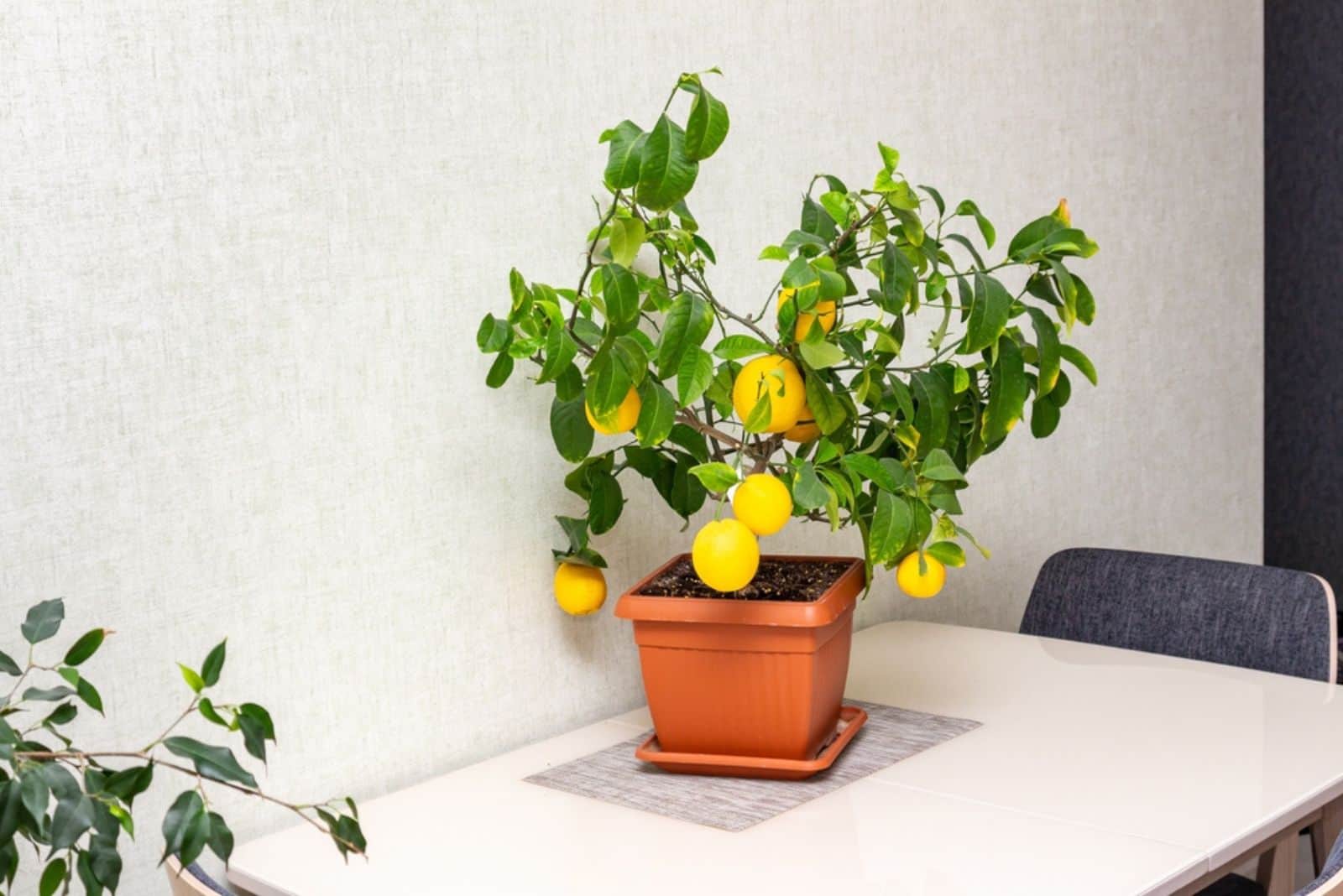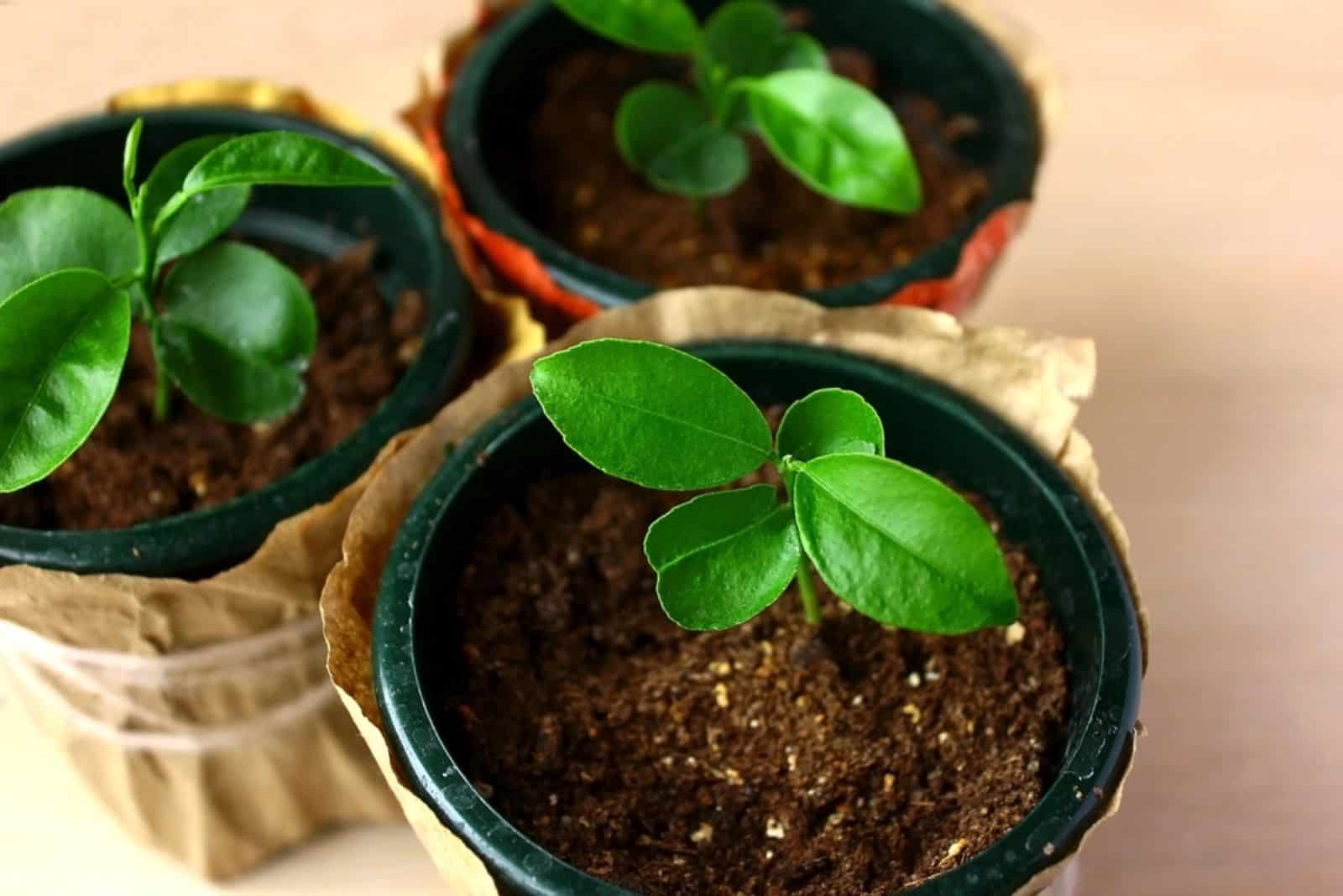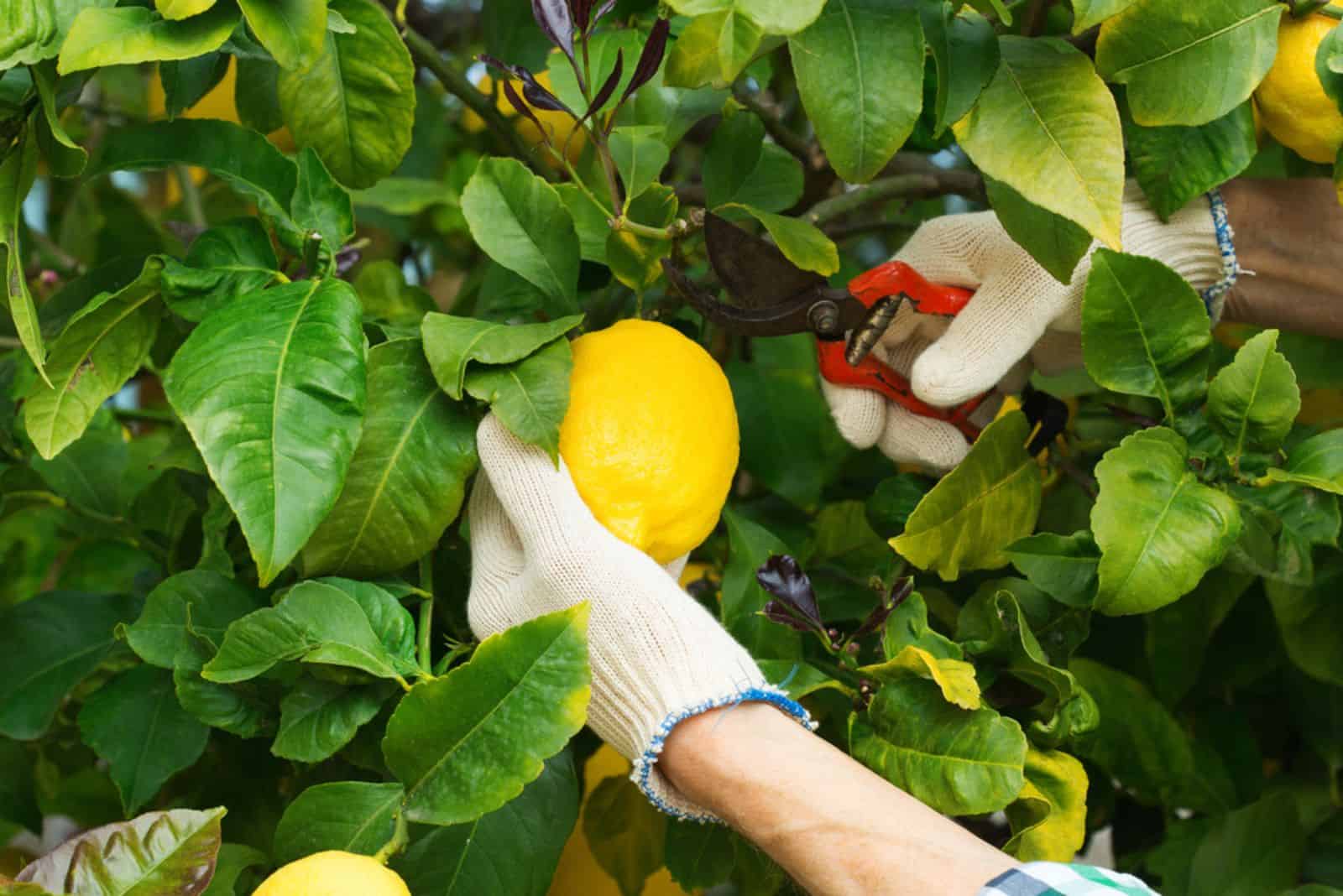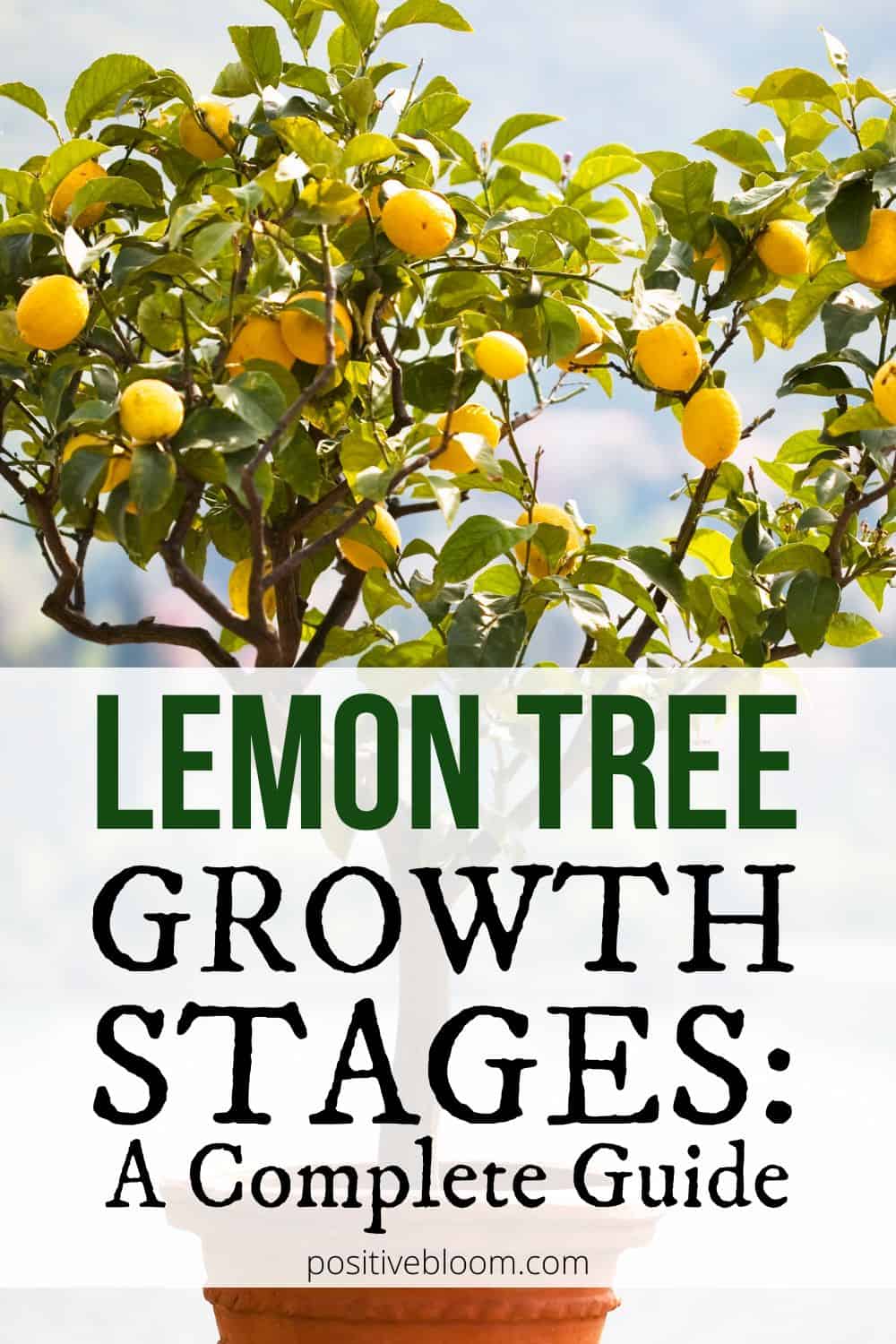Growing lemons in your garden and having fresh lemon juice all the time is awesome! You can even grow a lemon tree indoors.
If you plan on growing a lemon tree (Citrus limon), then you should get familiar with its life cycle. This citrus tree tends to grow a lot quicker than other trees. What’s interesting is that they can bear fruits just two years after planting, which is very uncommon for fruit trees.
There are seven lemon tree growth stages, and we are going to describe how the tree looks at each of them. This way, you will know what stage of development your tree is currently at, so keep reading!
Lemon Tree Growth Stages
Every plant starts from seeds. Seeds need to germinate in order for a little seedling to develop. The seedling will continue growing and developing, but only if its needs are met!
In optimal conditions, your baby lemon will grow into a mature plant, and soon enough it will start fruit production.
Please note that this tree grows in USDA hardiness zones 9 to 11, so if you live somewhere with a warm climate, you can grow lemon trees the whole year round!
This little tree needs well-draining soil, frequent watering, and a warm climate. Apply lemon tree fertilizers during the growing season to boost new growth and development.
Now, let’s look at the growth stages of a lemon tree!
1. Germination
Lemon seeds are tiny, smooth, and have a creamy white color. They can germinate from 5 to 7 days if the conditions are optimal. This is when your little plant begins to develop roots and small leaves.
2. Young Seedling Stage
If the germination is successful, you will notice tiny green leaves coming out of the soil. These little sprouts will keep on growing and producing new leaves. Soon enough, the seedling will have established stems and leaves.
During this stage, your small plant is very delicate. Make sure to give them enough water, especially during the hot summer days. You can transplant the seedling after three months. Choose a sunny location in your garden because they need plenty of sunlight.
3. Youth
The young seedling will slowly develop into saplings. During this stage, they should be protected from cold weather. As they mature, they develop thicker foliage, stronger trunks, and thorns on their branches.
Your baby lemon tree has developed into a mature lemon with strong trunks and branches!
During this growth cycle, you will still have to take good care of your tree. If you want to have the best lemon tree, make sure to give it a lot of sunlight, enough nutrients, and water. However, don’t give it too much water because you can easily overwater your lemon tree, which often leads to root rot (this can completely destroy your plant).
They are also more tolerant to cold weather, though they are not frost-hardy.
4. Flowering & Fruiting
After two years of growing, your lemon tree should start with bud formation in the winter. Once the temperature rises in the early spring, flowers will start emerging from these flower buds.
In the early summer, you will be able to see numerous little white flowers that look absolutely adorable!
The lemon tree is a self-pollinating tree, which means that it does not need any help with pollination from other sources. These lovely flowers will eventually turn into lemon tree fruits!
Please note that your plant needs plenty of water to produce juicy lemons. If you are growing your lemon tree in a container, make sure that it has drainage holes in the bottom so the excess water can be easily removed.
5. Ripening
Lemons usually take about 4 months to mature. During this period, keep your lemon tree hydrated and add fertilizers often. Be aware of the pests that can attack your lemon tree and prevent fruit production — aphids are a lemon’s arch nemesis!
In case your tree gets infected, simply prune off affected leaves or branches to prevent spreading, and also apply pesticides.
Lemons are ready to be harvested once they’ve matured. Mature lemons are oblong, large, and have yellow and smooth skin. The size of lemons depends on the growing conditions and also the type of lemon tree (Eureka and Meyer lemon trees produce the best fruits!).
If the fruit is exceptionally large or has thick skin, it likely originated from a tree rootstock or a type of grapefruit.
6. Harvesting
Green lemons should not be harvested because they are still unripe, and if you harvest them they won’t continue with further growth and development.
Once you see those ripe, yellow lemons, you are good to go!
7. Drying
If you don’t harvest the lemons, they will turn brown and dry. Eventually, these lemons are going to fall off the tree.
Your lemon tree will continue producing lemons until it reaches old age. Growers usually save the seeds and immediately start growing a new lemon tree.
FAQs
1. How long does it take to grow a lemon tree?
It will take about two to five years to grow a lemon tree. If the growing conditions are optimal, the tree will start producing lemons just two years after planting.
2. What is the best environment for lemon trees to grow in?
The best environment for lemons trees includes warm climates, a lot of water to keep the soil moist, and plenty of sunlight and nutrients to encourage growth and fruit production.
3. What is the difference between an immature lemon and a mature lemon?
Immature lemons have green skin, they are smaller in size, and they don’t have that specific citrusy fragrance. Mature lemons are large and oblong, and they have smooth, yellow skin.
To Sum Up
The lemon tree growth stages are quite straightforward — the seeds germinate, little sprouts grow into seedlings, seedlings mature and start producing flowers, which eventually turn into delicious lemons!
You can use these lemons to make some delicious lemonade, and then save the lemon peel and use it to improve the soil’s acidity if you are growing acid-loving houseplants.
I hope this article was helpful.
Until next time!
Like this post? Share or pin it for later!

